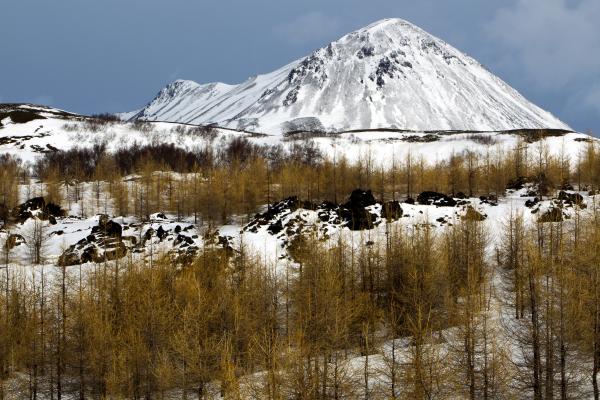Reindeer are not native to Iceland. Like all other land mammals reindeer were brought to Iceland by humans: The only native land mammal in Iceland is the Arctic Fox. The reindeer were brought in the 18th century, following a royal decree. The king and his advisors believed reindeer would thrive in Icelandic conditions. Icelandic farmers would then be taught reindeer herding.
Read more: Hornstrandir: Where the Arctic Fox reigns supreme
Icelanders as reindeer herders

Four different groups of reindeer were brought to Iceland in the 1770s and 1780s. One group was released in Vestmannaeyjar archipelago off the south coast of Iceland, another in Reykjanes peninsula in the southwest, a third in Eyjafjörður fjord in North Iceland and a fourth group in Vopnafjörður fjord the Eastfjords.
While some of the reindeer managed to survive the transplantation from Finmark in Norway to Iceland, attempts to introduce reindeer farming were a complete failure. All the animals in the group in Vestmannaeyjar died within a few years, while the groups in Reykjanes and Eyjafjörður survived until the early 20th century. The only flock which has survived until this day are the animals who were released in Vopnafjörður.
Read more: Reykjanes Geopark: A volcanic wonderland less than an hour’s drive from Reykjavík

The herd in Reykjanes, which counted a few hundred animals at its height, was seen regularly until 1900. The last animal from this herd was seen in 1930. The herd in Eyjafjörður prospered until the early 19th century, counting several hundred animals who lived in the northern parts of the Central Highlands. However, most of the flock died in a particularly hard winter in 1822. By 1900 it was estimated that only a few dozen animals were left in the highlands east of Mývatn lake in NE Iceland.
The only animals which managed to prosper were those which were released in the Eastfjords. Today the population in the mountains of the Eastfjords and the eastern part of the Central Highlands counts some 6-7,000 animals.
Reindeer are hunted in the wild, with permits being issued for the hunting of 1,200-1,300 animals each year. A recent study by the Ministry of Agriculture found that large scale reindeer farming was incompatible with the maintenance of the wild population. The ministry has therefore opposed any ideas to begin commercial reindeer farming in Iceland
Reindeer are not native to Iceland. Like all other land mammals reindeer were brought to Iceland by humans: The only native land mammal in Iceland is the Arctic Fox. The reindeer were brought in the 18th century, following a royal decree. The king and his advisors believed reindeer would thrive in Icelandic conditions. Icelandic farmers would then be taught reindeer herding.
Read more: Hornstrandir: Where the Arctic Fox reigns supreme
Icelanders as reindeer herders

Four different groups of reindeer were brought to Iceland in the 1770s and 1780s. One group was released in Vestmannaeyjar archipelago off the south coast of Iceland, another in Reykjanes peninsula in the southwest, a third in Eyjafjörður fjord in North Iceland and a fourth group in Vopnafjörður fjord the Eastfjords.
While some of the reindeer managed to survive the transplantation from Finmark in Norway to Iceland, attempts to introduce reindeer farming were a complete failure. All the animals in the group in Vestmannaeyjar died within a few years, while the groups in Reykjanes and Eyjafjörður survived until the early 20th century. The only flock which has survived until this day are the animals who were released in Vopnafjörður.
Read more: Reykjanes Geopark: A volcanic wonderland less than an hour’s drive from Reykjavík

The herd in Reykjanes, which counted a few hundred animals at its height, was seen regularly until 1900. The last animal from this herd was seen in 1930. The herd in Eyjafjörður prospered until the early 19th century, counting several hundred animals who lived in the northern parts of the Central Highlands. However, most of the flock died in a particularly hard winter in 1822. By 1900 it was estimated that only a few dozen animals were left in the highlands east of Mývatn lake in NE Iceland.
The only animals which managed to prosper were those which were released in the Eastfjords. Today the population in the mountains of the Eastfjords and the eastern part of the Central Highlands counts some 6-7,000 animals.
Reindeer are hunted in the wild, with permits being issued for the hunting of 1,200-1,300 animals each year. A recent study by the Ministry of Agriculture found that large scale reindeer farming was incompatible with the maintenance of the wild population. The ministry has therefore opposed any ideas to begin commercial reindeer farming in Iceland






